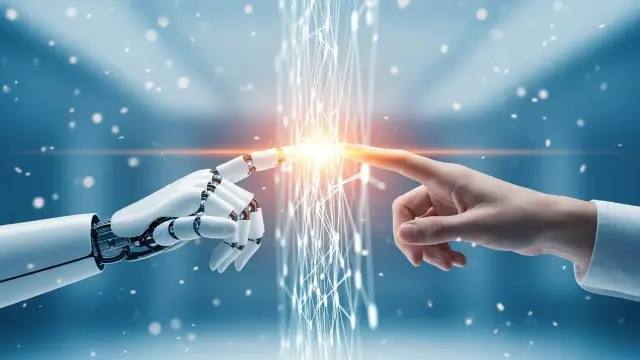Digital twins are rapidly moving into mainstream use, with 29% of manufacturers now adopting the technology, up from 20% in 2020. Demand for related skills is rising too, with job postings up 11% in late 2023 despite declines in most other tech roles. Ranked among the fastest-growing specialisms, digital twin expertise is set to fuel a market projected to grow around 30% annually through 2027.
What is a Digital Twin?
A digital twin is a virtual replica of a physical object, process, or system that stays connected to its real-world counterpart through IoT sensors and data streams. This link allows organisations to monitor performance, run simulations, and optimise operations in real time. By providing a safe, data-driven environment to test ideas and spot issues early, digital twins are becoming a critical tool across industries, from healthcare to manufacturing.
How does it work?
Digital twins are created by combining real-time sensor data with mathematical models. Once connected, the virtual model mirrors the behaviour of its physical counterpart, offering insights into performance, potential risks, and areas for improvement. Depending on the quality and volume of data available, a twin can be relatively simple or highly sophisticated, capable of simulating complex, real-world scenarios.
Trends Shaping the Digital Twin Market
Digital twin technology is gaining momentum across a range of industries, each leveraging its capabilities to drive efficiency, innovation, and smarter decision-making:
- Healthcare – Digital twins are transforming patient care, from real-time monitoring and personalised medicine to improving hospital operations, telemedicine services, and supply chain efficiency.
- Manufacturing – They enable predictive maintenance, streamline production lines, enhance quality control, optimise supply chains, and manage product lifecycles more effectively.
- Smart Cities – Digital twins support smarter urban planning through traffic management, energy monitoring, waste reduction, heat mapping, and improved public safety.
- Automotive – They help optimise vehicle performance, simulate autonomous driving, enhance connected systems, improve component design, and elevate the customer experience.
Impact of Generative AI on the Digital Twin Industry
While digital twins are driving trends across multiple sectors, there’s also a growing trend that’s accelerating the advancement of the technology itself. Generative AI is transforming digital twin development by automating model creation and expanding simulation capabilities, enabling faster, more cost-effective insights. At the same time, IoT devices deliver a constant flow of real-time data, ensuring twins remain accurate and dynamic. Together, these technologies can simulate countless scenarios and configurations, allowing digital twins to explore novel solutions and system behaviours that may not have been previously considered.
This capability is particularly powerful in complex environments like automotive design or urban development, where AI can "imagine" alternative designs or processes that humans might not easily identify. As a result, digital twins are becoming more adaptive, creative, and capable of evolving alongside the systems they represent.
Preparing for the Digital Twin Revolution
To stay ahead of the digital twin revolution, businesses need to prioritise not just the technology, but the talent behind it. Upskilling existing teams is essential, particularly in areas like data modelling, simulation, and AI integration, but most organisations will also need to hire specialists to plug the skills gaps. Strategic partnerships with staffing experts and access to niche talent pools can make or break the success of a digital twin strategy. Investing in the right people, whether permanent, contract, or project-based, ensures businesses can scale their digital twin capabilities with agility. In a fast-moving landscape, the organisations that build the strongest teams will be the ones that leverage the best of the technology and increase their return on investment.
Conclusion
The digital twin revolution isn’t on the way; it’s already here. If you work in a data-driven or complex environment, you’re likely seeing its potential already. By understanding how digital twins work and investing in the right tools and talent, you’re setting yourself and your business up to stay competitive. Whether it’s streamlining operations, improving products, or enhancing customer experiences, digital twins are quickly becoming essential. The real question is how soon you’re ready to get started.
At Focus on Microsoft, we’re already supporting clients and candidates in digital twin roles across architecture, integration, and data, and demand is only growing. If you need expert advice on how to build the right team for your digital twin revolution, and access to a network that can make it happen, reach out today to explore how we can partner with you.




